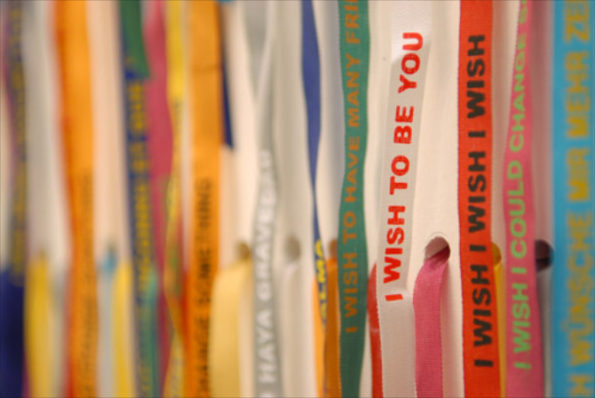Search
To search for an exact match, type the word or phrase you want in quotation marks.
A*DESK has been offering since 2002 contents about criticism and contemporary art. A*DESK has become consolidated thanks to all those who have believed in the project, all those who have followed us, debating, participating and collaborating. Many people have collaborated with A*DESK, and continue to do so. Their efforts, knowledge and belief in the project are what make it grow internationally. At A*DESK we have also generated work for over one hundred professionals in culture, from small collaborations with reviews and classes, to more prolonged and intense collaborations.
At A*DESK we believe in the need for free and universal access to culture and knowledge. We want to carry on being independent, remaining open to more ideas and opinions. If you believe in A*DESK, we need your backing to be able to continue. You can now participate in the project by supporting it. You can choose how much you want to contribute to the project.
You can decide how much you want to bring to the project.

Last weekend I headed to the Caixaforum in search of the title: “What to desire”. Attracted by the suggestive proposition, though at the same time curious to see how one could resolve conceptually the curatorial challenge of desire, with only works from the collection of “la Caixa”.
I was surprised to discover that the exhibition was located in the space right by the stairs: that’s not very big and bordering on a passing through zone; but on entering I understood the decision as only 7 works have been chosen. Three left me indifferent: Liu Jianhua, Dora García and Barceló. As for the others: the birdcages of Pepe Espaliú defied exclusion in an exercise of isolation: fusing delicate poetics with resistant materials. Continuing with this straightforwardness (though not simplicity) the video by Cabello and Carceller showed two hands carrying out the same act, repeatedly, each feeding off the other in what seemed to be a metaphor of the life cycle. There is also room for versions, in this case of the “Large Glass” by Sherrie Levine that dissects the work by isolating six of the bachelors in independent vitrines, separating them not just from the bride but also from their own masculine company. Appropriating the “Large Glass” and not dying in the attempt is worthy of a certain respect, however, I ask myself if the artist´s desire would have been to be Duchamp for a moment (like Duchamp to be Da Vinci). Anish Kapoor presents a concealed work: his impregnated wall. A beautiful belly camouflaged in the wall, so minimalistic that one barely sees it. Only by going close up can we spot the shadows created by hands that have not been able to avoid touching it, in search of the inner pulse.
Finally, the work that captures all the attention, “Yo deseo tu deseo”, (I desire you desire) by Rivan Neuenschwander (2003-2013): a sort of wailing wall turned 180º, where we don’t ask but receive. We receive wishes printed on wristbands. Some are sentimental and others fantastical, but all stem from the illusion of strangers who invite us to appropriate (once again) their most secret yearnings. It is interesting to read each one of the proposals but also to watch how the public behaves. Despite the fact that we are asked to take only one ribbon per person, I discover that almost everyone ignores the request, particularly grandparents and kids. Grandparents to give them to their children, grandchildren and other acquaintances: while the children…When little we are factories of desires, we fantasise about magic mice, play with invisible friends…but over the years end up becoming workers or (in the worst case) NEETs. The only thing that briefly distracts us is hysteria and if you’re seen talking its just worrying. Only bills occupy this space of desire, and even more so in these times.
We like to feel as if we participate in art. We live in an era of constant interaction, a stronghold of almost boundless capitalism, where accumulating objects and experiences has become our raison d’être. This is why interactive art attracts us. We don’t resign ourselves to observing something we like, to then just cast it aside. We have to catch it, feel we are owners of it, and luckily we can count on the ideal tool: the mobile phone. If there is an action that characterises art fairs it’s not so much the purchasing of work as the photographing of it, or better still, photographing oneself beside it. It is the most affordable way of feeling involved or owner of it… So I ask myself, would art stop being art if it was within the reach of every pocket? Why do we prefer possession to experience?
But I have found the work that could complete this exhibition, it’s found in the cinema. Under the title “Searching for Sugar man” the multi-disciplinary Malik Bendjelloul (in charge of direction, script and production) returns our illusions by way of a quintessential documentary. The characters in this hour and half long film are feelings: hopes and passions that are so strong they resurrect Sixto Rodríguez: an artist, musician, poet…cast into oblivion due to the corrupt music industry (Peio Aguirro made an interesting analysis of this documentary in his article “Documentaries about success. Searching for Sugar Man” ).
Black legend said that Rodríguez committed suicide in a club in Detroit in front of a booing and unhappy audience: artistic failure had done him in. However, in another part of the world his music continued alive and well; he had become the soundtrack for the movement in the nineties that fought the South African Apartheid, and all thanks to a copy of his record “Cold fact”. Mystery surrounds this captivating investigation that, arising from a hilarious and mad hope, against all odds, achieves a miracle: a large smile appears on everybody’s face in the cinema. It has managed, for a short spell to return us to childhood and we believe once again in that desire that for a while now we have kept firmly under lock and key.
And as it might be a while before we achieve it, the best thing to do is carry on enjoying the ride, for example, enjoying works such as Kapoor’s, with, why not, Rodríguez playing in the background.

Alba Benavent is an eternal apprenticeship. An art historian, she observes the artistic world under a curious as well as analytical look. Research has always been his favorite subject. With a restless mind, almost as much as his feet, he proposes to make the intricacies of the artistic bar from the reflection around the different performances of his agents more accessible. She writes the blog elchiringuitodelarte.
"A desk is a dangerous place from which to watch the world" (John Le Carré)